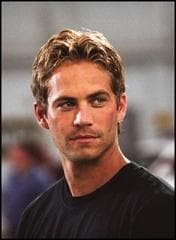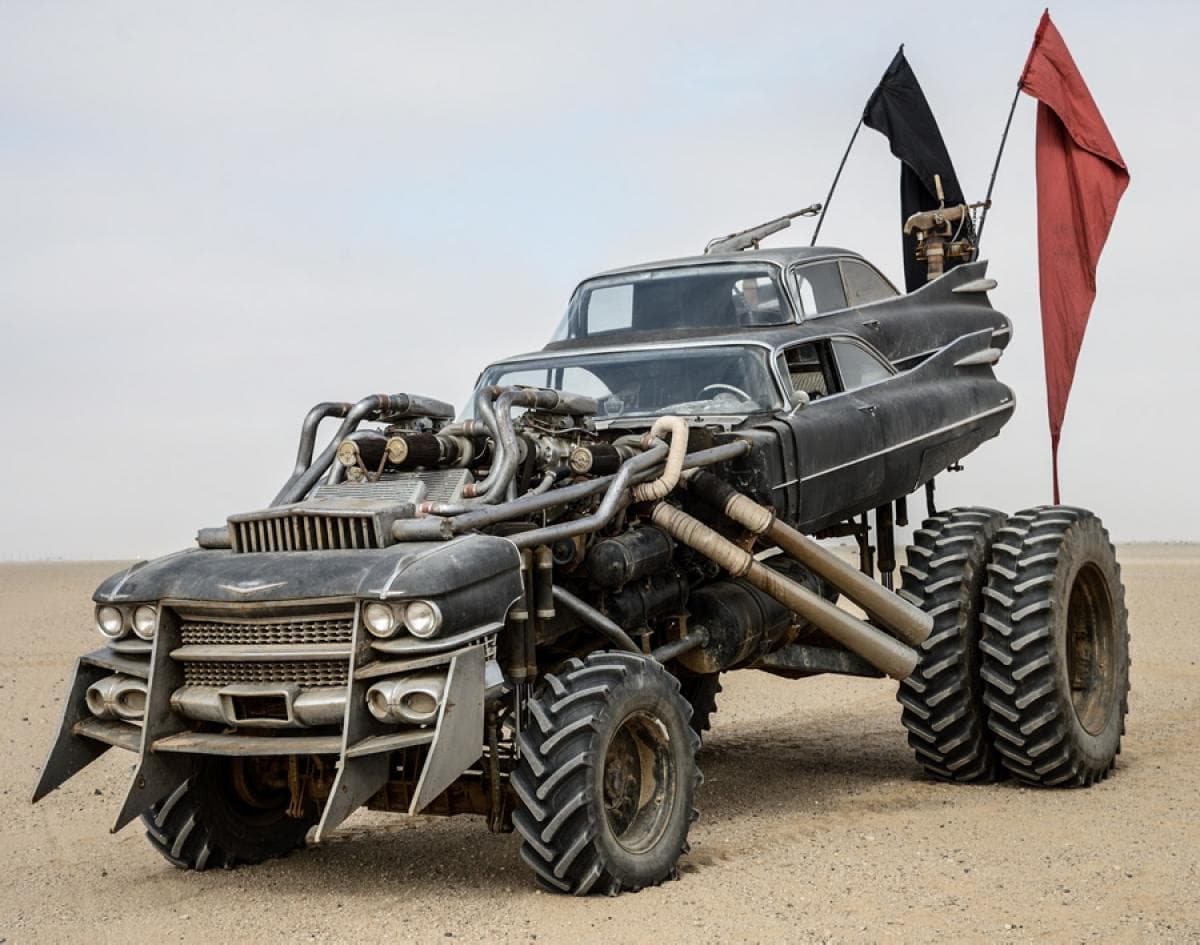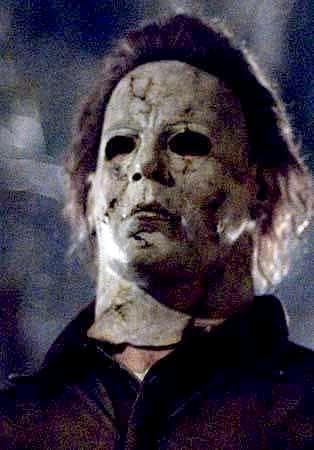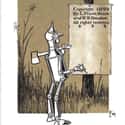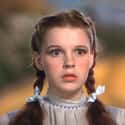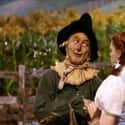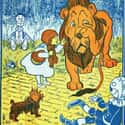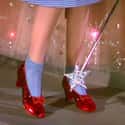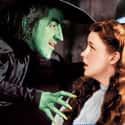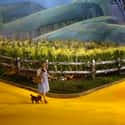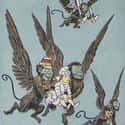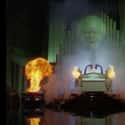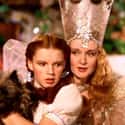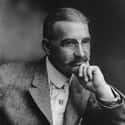-
(#1) The Wizard Of Oz Was Written In The 1890s, And It Carried A Secret Message That Wasn't Decoded Until 1964
Although the Wizard of Oz might be most famous today for the 1939 movie, starring Judy Garland, the book was originally written in the 1890s by author L. Frank Baum. And it turns out that the Wizard of Oz is full of hidden political symbolism, which sometimes seems barely hidden at all.
But no one noticed the clear parallels to American politics in the 1890s until a historian named Henry Littlefield published an analysis of The Wonderful Wizard of Oz in 1964. For decades, people had dismissed Baum's book as a fairytale for children. But in fact, it carried strong messages about the biggest problems facing America at the end of the nineteenth century.
-
(#2) Dorothy Represents The Average American
In the Wizard of Oz, Dorothy is an orphan living in Kansas, a dull, gray place that has lost its vibrancy. According to historian Quentin Taylor, Dorothy represents "each of us at our best – kind but self-respecting, guileless but levelheaded, wholesome but plucky." She is, in short, "the girl next door," and she represents the average American looking for a solution to her simple problems.
In the 1880s and 1890s, the state of Kansas was going through a terrible time. Droughts, harsh winters, and invading grasshoppers scorched the prairie. Devastated farmers blamed all sorts of forces: Wall Street, the railroads, politicians, or nature itself. In fact, the tribulations of America's farmers gave rise to the Populist movement, which promised solutions. And The Wizard of Oz contained coded symbolism that supported Populism.
-
(#3) The Scarecrow Represents Midwestern Farmers
The poor Scarecrow in the Wizard of Oz is convinced that he doesn't have a brain. But his "terrible sense of inferiority and self doubt," according to Littlefield, is actually because of years of ridicule. In one 1896 article, for example, Kansas farmers were accused of "ignorance, irrationality and general muddle-headedness."
The Populist party, new to the scene at the end of the 1800s, was primarily made up of farmers who were mocked by everyone else. They were called deluded simpletons and radicals. But the Scarecrow proves that he isn't stupid – he shows common sense and resilience on the journey. The story implies that farmers are not as stupid as their political opponents suggest.
-
(#4) The Tin Man Is The Mistreated Factory Worker
In the 1890s, the US was in the middle of an industrial revolution. And that shift created a lot of workers who weren't being treated well by their bosses. Enter Baum's Tin Woodman. He represents a dehumanized worker, who was literally turned into tin by the Wicked Witch of the East – the Tin Man was once a strong, healthy worker, but after the witch cursed him, he accidentally chopped off his own limbs. Each was replaced with tin, transforming the worker into the Tin Man.
The Tin Man represents factory workers who have lost their heart in the new economy. And the symbolism goes even deeper. The Tin Man is rusted when Dorothy first meets him, paralleling the high unemployment during the depression of the 1890s. But he is ready to work, as Dorothy demonstrates by giving him just a few drops of oil.
-
(#5) The Cowardly Lion Is Populist Hero William Jennings Bryan
There are a lot of clues that the Cowardly Lion represented the greatest Populist hero of the 1890s, William Jennings Bryan. Bryan, lion. Get it? The symbolism goes deep on this one. Like the Cowardly Lion, Bryan was known for his "roaring." He was even portrayed as a lion by the press.
As the Democratic presidential candidate in 1896 and 1900, Bryan promoted the free-silver movement, arguing that America's gold standard was harming farmers. In his famous "Cross of Gold" speech in 1896, Bryan railed,
"Having behind us the commercial interests and the laboring interests and all the toiling masses, we shall answer their demands for a gold standard by saying to them, you shall not press down upon the brow of labor this crown of thorns. You shall not crucify mankind upon a cross of gold."
But Bryan was unable to win either election, in part because he couldn't win over eastern workers – just like the Cowardly Lion's claws "could make no impression," on the Tin Man.
-
(#6) The Secret's In The Silver Slippers
The beautiful ruby slippers in the 1939 movie version of The Wizard of Oz don't exist at all in L. Frank Baum's book. That's because the original slippers were silver. They were changed to ruby slippers in the movie to take advantage of the marvels of Technicolor, still a new technology at the time. But once you realize the slippers were originally silver, the political message becomes loud and clear.
Farmers wanted to return to free silver to protect them from the economic harm caused by the gold standard. And in The Wizard of Oz, the Yellow Brick Road, representing gold, is a dangerous path. It leads to the Emerald City, representing the link between the gold standard and political interests. And it is full of cracks and holes, as Baum writes. The bricks were "very uneven," and sometimes "broken or missing altogether." The Scarecrow, representing farmers, fell onto the bricks again and again. But Dorothy's silver slippers carry her safely around the damage, hinting that returning to a silver and gold standard was the solution to the economic problems of the 1890s.
And just to make it extra clear that The Wizard of Oz is about monetary policy, Baum named his imaginary land Oz – the same as the abbreviation for ounce, the measure used for gold and silver.
-
(#7) The Wicked Witches Represent Powerful Interests In American Politics
The two wicked witches in The Wizard of Oz represent powerful forces in American politics that threaten the country. The Wicked Witch of the East, who Dorothy smashes with her house, is a thinly-veiled reference to Wall Street and all the moneyed interests in the 1890s. She represents financial-industrial interests, and she is the one who stole the Tin Man's heart and enslaved the Munchkins.
The Wicked Witch of the West similarly symbolizes the rich in America's west: bankers, railroad owners, and wealthy oilmen like J.D. Rockefeller. Just as the Wicked Witch of the East enslaves the Munchkins, the witch in the west enslaves the Winkies, who represent Asian laborers in America's West. She is finally dissolved with water – another allusion to the monetary debate over liquidity.
-
(#8) It Turns Out A Lot Of The Wizard Of Oz Is About . . . Fiscal Policy
The Wizard of Oz is an exciting story of a young girl's journey to find her way back home – and her realization that she had the power within her all along. But according to scholars who see political symbolism in the story, it's also all about monetary policy. That's right. In the 1890s, the big debate in American politics was about the gold standard. Under the gold standard, America's paper currency was backed by gold, and anyone could take a dollar to the bank and receive a dollar's worth of gold.
But the gold standard was causing huge monetary problems for America's farmers. Prices were falling. Farmers were defaulting on their loans. Bankers were seizing farms and selling them off, meaning farmers lost their jobs and their homes. And many farmers blamed the gold standard. Before 1873, a dollar could be exchanged for gold or silver - and farmers wanted a return to "free-silver," because the abundance of silver would cause inflation, making it easier for farmers to pay back their loans.
All of this might seem removed from The Wizard of Oz until you consider two things: the importance of the Yellow Brick Road (representing gold) and Dorothy's slippers––which weren't ruby in the book. They were silver.
-
(#9) The Flying Monkeys Are Super Racist
The flying monkeys do the evil bidding of the Wicked Witch of the West. And according to Littlefield, they represent the plains Indians, who were still fighting for their survival for their survival against the United States government in the late 1800s. Baum's description of the flying monkeys makes the connection clear. "Once," their leader explains, "we were a free people, living happily in the great forest, flying from tree to tree, eating nuts and fruits, and doing just as we pleased without calling anybody master." But all the changed then Oz arrived "to rule over this land."
L. Frank Baum had strong opinions about America's Indians. And they were super racist.
"The Whites, by law of conquest, by justice of civilization, are masters of the American continent, and the best safety of the frontier settlements will be secured by the total annihilation of the few remaining Indians. Why not annihilation?"
After advocating for genocide, Baum added,
"Having wronged them for centuries we had better, in order to protect our civilization, follow it up by one more wrong and wipe these untamed and untamable creatures from the face of the earth."
With those views, it's no surprise that Baum made the flying monkeys evil.
-
(#10) The Emerald City Is Actually Washington, D.C.
The goal of Dorothy's journey through Oz, at least initially, is to reach the Emerald City. The magical place will solve all of her problems, and the mysterious Wizard of Oz will help her return to Kansas. But Dorothy's initial optimism about the beautiful city quickly evaporates.
According to Littlefield, "the Emerald City represents the national Capitol," making it Washington, D.C. And although Dorothy, the average American, believes that the entrancing capital city can solve all of her problems, she soon realizes that the city, like the Wizard, is more mirage than real.
-
(#11) The Wizard Is The President, Whose Power Is Just An Illusion
Although the Wizard claims to be great and powerful, he's actually a charlatan. As Littlefield explains, the Wizard is "a little bumbling old man, hiding behind a facade of papier mache and noise," making him "any President from Grant to McKinley." Rather than playing a specific person, the Wizard is symbolic of the presidency itself – and just like a politician, the Wizard says, "I never grant favors without some return."
In the book, the Wizard asks Dorothy to kill the Wicked Witch of the West. The request shows the Wizard's lack of power – if he was truly so great, would he need a little girl to carry out his orders? Like American presidents, the Wizard's power was an illusion – and in many ways, he was less powerful than the two wicked witches.
-
(#12) There's Symbolism Everywhere In The Wizard Of Oz
The symbolism in The Wizard of Oz runs incredibly deep. The cyclone, some argue, represents the rise of Populism which swept the Midwest. The poppy fields represent the anti-imperialist movement, which distracted William Jennings Bryan from monetary issues (by putting him to sleep). Even Dorothy's companion Toto has been imagined as a symbol of prohibitionists, because he "trotted along soberly behind her."
The good witches, too, represent supporters of Populism. The Good Witch of the North symbolizes the upper Midwest, which voted for Bryan in the 1896 election and propelled Populism to the national stage. Glinda, the Good Witch of the South, represents Southern Populists who argued in favor of free silver – just like Glinda is the only one who understands the power of Dorothy's silver shoes. The East and West, which were against Populism, are called evil, while the North and South are good for supporting Populism.
And three colors come up again and again in The Wizard of Oz: gold, silver, and green. The colors of money.
-
(#13) Baum's Motives Remain A Mystery
But did L. Frank Baum really encode a secret populist message in his children's book? Some have argued that Baum, who was not himself a populist, would not have included a hidden message in his book. In fact, evidence shows Baum voted for Republican McKinley over William Jennings Bryan. Still, that doesn't negate the symbolism of the book. Even if Baum himself did not champion Populism, his book can still be read as a critique of American politics in the 1890s. In the end, we may never know Baum's true intent. But regardless, The Wizard of Oz also tells the story of American politics in the 1890s. As scholar Quentin Taylor concludes,
"Oz operates on two levels, one literal and puerile, the other symbolic and political. Its capacity to fascinate on both levels testifies to its remarkable author's wit and ingenuity."
New Random Displays Display All By Ranking
About This Tool
The Wizard of Oz is a fairy tale film produced by MGM. The film was adapted from Lyman Frank Baum's book The Wonderful Wizard of Oz and the musical of the same name. It was released in the United States in 1939. It is considered a classic children's film, full of imagination and vitality, there are all kinds of magical and interesting fairy tale characters and cheerful singing and dancing scenes. It is hard to imagine that this movie will have any political significance.
This page displays 13 entries, we collected some secret political symbolism that people never knew was hidden within The Wizard Of Oz. Obviously, everyone can have their own opinions on this movie.
Our data comes from Ranker, If you want to participate in the ranking of items displayed on this page, please click here.

